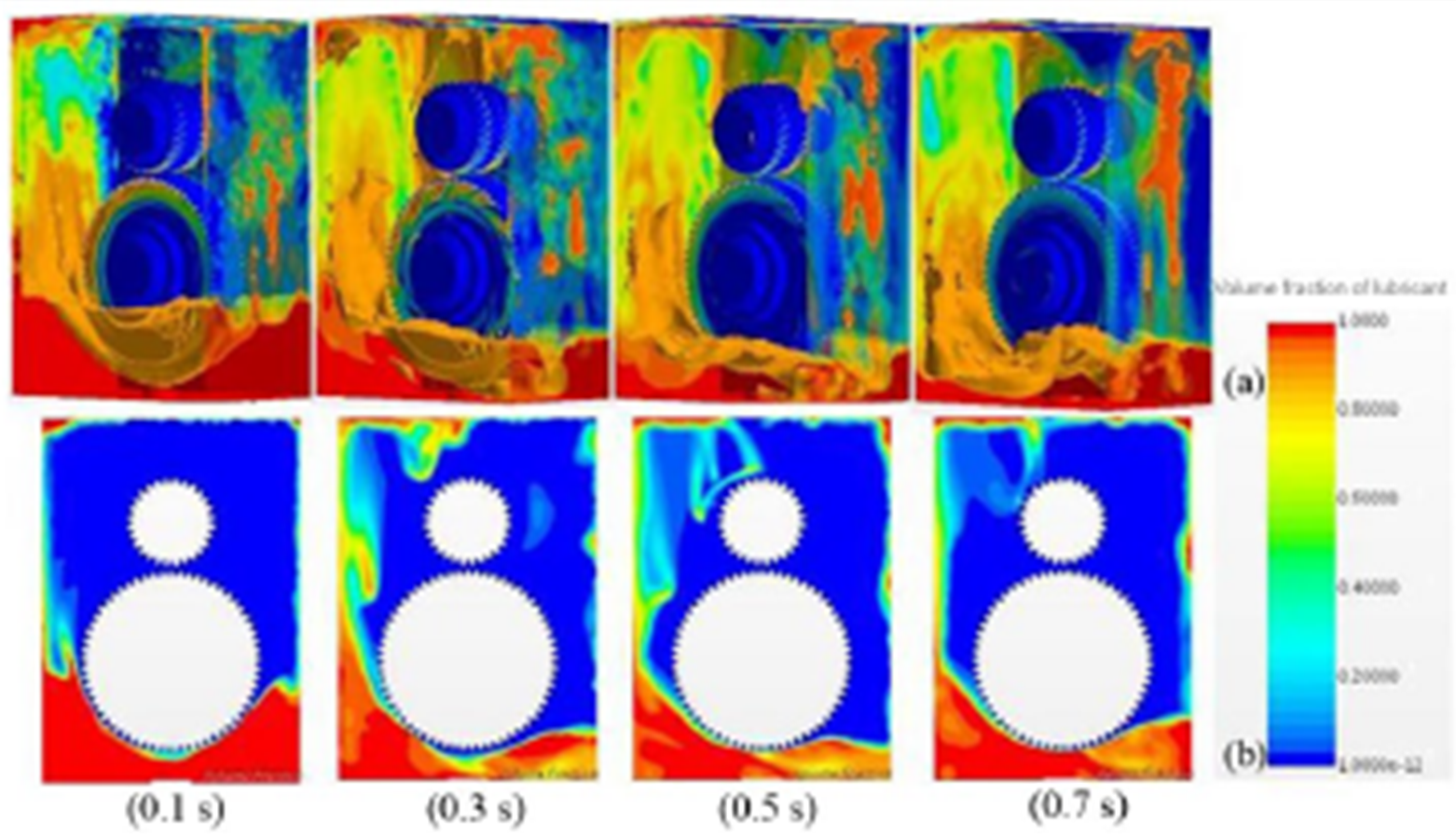Comparing Finite Volume & Particle CFD Simulation Methods for Understanding Lubrication in Automotive Transmissions & Axles
A two-year study by Jin Xu
Particleworks was 38.9x faster as compared to a finite volume approach. Particleworks ran on a 4-core PC with a GPU card and the finite volume code ran on a 90-core CPU cluster
Introduction
Understanding the flow of oil lubrication in transmissions and axles is vital to improving the efficiency and reducing the wear of key components. The majority of geared transmissions and axles are splash lubricated, which means lubrication of gears and bearings rely upon complex flow patterns resulting from gears churning the oil and deflecting off the walls of the gearbox housing. Proper levels of lubricant are needed to maintain the lubrication of all components. A lack of proper lubrication at gear meshes and at the bearings will increase friction, resulting in higher temperatures and premature failure of components in the system. Likewise, excessive lubrication can increase the churning losses and decrease the efficiency. Gearboxes are usually operated conservatively with an oversupply of oil to increase the operational reliability and the lifespan of the gears, at a cost of operational efficiency. The selection of a lubricant, the volume of lubricant, and shape of the gearbox housing can all be optimized according to the expected gear speeds, loads, and temperatures. For example, the lubricant viscosity will vary as a function of temperature. Low viscosity can cause excess metal-to-metal friction between gears in engagement, while a highly viscous lubricant might drastically increase the shear stress acting on the gear surface, increasing the churning losses.
Computational fluid dynamics (CFD) simulations are widely accepted in the automotive industry as a method to understand the lubricant flow progression inside a gearbox and optimize lubrication. CFD simulation represents a systematic and affordable approach to investigate the performance of a fluid-lubricated or fluid-cooled device over a wider range of operating conditions than could be tested using physical prototypes. Finite volume-based CFD models have been extensively applied to investigate gearbox lubrication and the lubricant flow. Simulations focused on lubricant flow yielded results in good agreement with experimental results. Two main challenges are currently limiting the effectiveness of finite volume methods to simulate lubrication in gearboxes. First, the combination of the unsteady and turbulent nature of the flow, along with the need for some type of sliding or adaptive mesh to account for the gear rotation can result in a computationally expensive simulation that can require prohibitively long simulation times on expensive hardware. Second, remeshing increases the technical expertise required by the CFD engineer to achieve good results.
Particle-based CFD arose in the 1970s in the form of smoothed-particle hydrodynamics, and later methods such as the moving particle semi-implicit method. Compared to finite volume CFD approaches, particle-based methods have the advantage of not needing re-meshing when the free surface changes drastically or when liquid coalesces or separates as is typically observed in lubrication flows. The mass of fluid represented by a particle can respond to a moving boundary as efficiently as a stationary boundary. In addition, CFD using meshfree particle methods can be calculated efficiently on GPUs. Modern advances in GPU technology have enabled CFD simulations with millions of particles able to be calculated on a single GPU. This means that meshfree particle methods can handle complex gearbox geometry with efficient use of computational resources. It possesses significant potential for the simulations involving free surfaces, e.g., lubricant oil flow simulation.
We compared CFD simulations using finite volume (STAR-CCM+) and meshfree particle (Particleworks) methods. Results indicated that both methods could be used to successfully understand the lubrication and churning losses of oil in a gearbox. However, the results using Particleworks were obtained much more efficiently, in terms of computation time.

